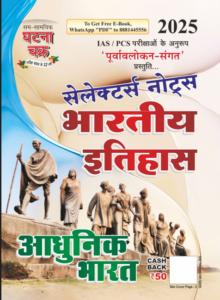Best place in Gaya for tourism
Gaya, a historic city in Bihar, India, is renowned for its rich cultural heritage and spiritual significance. Whether you’re a history buff, a spiritual seeker, or simply looking to explore a vibrant locale, Gaya has something for everyone. Here’s a guide to the top 10 places to visit in Gaya.
1. Bodh Gaya
The most famous site in Gaya, Bodh Gaya is where Siddhartha Gautama attained enlightenment and became the Buddha. The Mahabodhi Temple, a UNESCO World Heritage Site, houses the sacred Bodhi Tree, making it a must-visit for pilgrims and tourists alike.
2. Mahabodhi Temple
As part of Bodh Gaya, the Mahabodhi Temple is an architectural marvel. The temple complex features stunning sculptures and intricate carvings, attracting visitors who wish to delve into Buddhist history and culture.
3. Vishnupad Temple
This ancient temple, dedicated to Lord Vishnu, is famous for its footprint, believed to be that of the deity himself. The temple’s serene ambiance and unique architecture make it one of the top 10 places to visit in Gaya.
4. Dungeshwari Cave Temples
These caves, located about 12 km from Bodh Gaya, are significant for their association with Buddha’s life. The serene surroundings and ancient rock-cut structures offer a peaceful retreat for meditation and reflection.
5. Barabar Caves
Dating back to the 3rd century BCE, the Barabar Caves are some of the oldest rock-cut caves in India. The caves feature impressive architecture and inscriptions, making them an important archaeological site.
6. Nalanada
A short distance from Gaya, Nalanda is home to the ruins of the ancient Nalanda University, one of the world’s first residential universities. The site is rich in history and offers a glimpse into India’s educational past.
7. Sujata Stupa
This stupa marks the spot where Sujata offered milk-rice to Buddha before his enlightenment. The stupa and surrounding gardens provide a tranquil environment for visitors looking to reflect on Buddhist teachings.
8. Buddha Smriti Park
Located in Patna, but often visited by those in Gaya, this park is dedicated to the Buddha and showcases beautiful landscapes, statues, and serene walking paths. It’s a great place for relaxation and contemplation.
9. Bodhgaya Archaeological Museum
This museum houses a vast collection of artifacts related to Buddhism and the region’s history. With ancient sculptures, inscriptions, and relics, it’s an insightful stop for history enthusiasts.
10. Phalgu River
The Phalgu River is considered sacred and is a key site for Hindu rituals. Visitors can enjoy a peaceful walk along the riverbank, where many come to perform rites for their ancestors.
Conclusion
Gaya is a city that beautifully blends spirituality, history, and culture. From the iconic Bodh Gaya to serene temples and ancient caves, the top 10 places to visit in Gaya offer an enriching experience for all travelers. Whether you’re exploring sacred sites or soaking in the local culture, Gaya promises unforgettable memories.
Tips for Visiting Gaya
As you plan your journey to explore the top 10 places to visit in Gaya, here are a few tips to enhance your experience:
1. Best Time to Visit
The ideal time to visit Gaya is between October and March when the weather is pleasant. Avoid the monsoon season, as heavy rains can disrupt travel plans.
2. Local Cuisine
Don’t miss out on the local Bihari cuisine. Try dishes like Litti Chokha, Sattu Paratha, and traditional sweets like Anarsa. Many eateries around Bodh Gaya offer these authentic flavors.
3. Transportation
Gaya is well-connected by road and rail. While local rickshaws and taxis are available for getting around, consider hiring a vehicle for more convenient exploration, especially for sites outside the city.
4. Respect Local Customs
As many sites are religious, dress modestly and observe local customs. Always ask for permission before taking photographs, particularly in temples and during rituals.
5. Stay Hydrated
If you’re visiting during the warmer months, carry water to stay hydrated while exploring. The climate can be hot, especially during the day.
Final Thoughts
Gaya is more than just a destination; it’s a journey into the heart of India’s spiritual and historical heritage. Each of the top 10 places to visit in Gaya offers a unique story and experience, inviting travelers to connect with the past while embracing the present.
Whether you’re seeking enlightenment at the Mahabodhi Temple or reflecting by the banks of the Phalgu River, Gaya promises a transformative experience that will resonate long after your visit. Pack your bags, and embark on a memorable adventure to this remarkable city!
- बोधगया के प्रमुख घूमने वाले स्थान |best tourist place in Bodhgaya
- Bihar Police Result 2024 Decelered | Download Result pfd | Bihar police cut-Off
- BODHGAYA EYE HOSPITAL FREE TREATMENT | EYE Camp 2024 last date | अपनी आखों का फ्री में इलाज करवाए
About Gaya
Gaya is a city in the Indian state of Bihar, known for its rich historical and religious significance. It is a prominent pilgrimage destination, particularly for Buddhists, due to its proximity to Bodh Gaya, where Siddhartha Gautama attained enlightenment.
Gaya is also associated with Hindu traditions, especially the Pind Daan rituals, where people perform rites for deceased ancestors. The city features notable sites such as the Mahabodhi Temple, the Vishnupad Temple, and several other ancient monuments.
Culturally, Gaya is vibrant, with a mix of local festivals and traditions. Its location along the Falgu River adds to its scenic beauty. If you want to know more specific details, feel free to ask!
In addition to its religious significance, Gaya has a rich cultural heritage. The city is known for its traditional crafts, including handloom textiles and stone carvings.
Gaya also hosts various festivals, such as Makar Sankranti and Chhath Puja, which attract many visitors and showcase local customs and rituals. The vibrant local cuisine features dishes like Litti Chokha, a popular Bihari delicacy.
Educationally, Gaya has several institutions, including universities and colleges, contributing to its growing importance as an academic hub. The city’s blend of spirituality, culture, and history makes it a unique destination for travelers and scholars alike. If there’s a specific aspect you’re interested in, let me know!
Certainly! Here’s an in-depth exploration of Gaya, covering its history, cultural significance, and key attractions.
Gaya: A Historical and Cultural Overview
Introduction
Gaya, located in the state of Bihar, India, is a city steeped in history, spirituality, and cultural richness. Situated about 100 kilometers from Patna, the capital of Bihar, Gaya serves as a crucial pilgrimage site for both Hindus and Buddhists. Its significance is not just religious; the city boasts a vibrant culture, a diverse population, and a wealth of historical landmarks.
Historical Significance
Gaya’s history dates back to ancient times, and it has been mentioned in various texts, including the Puranas and Buddhist scriptures. It is believed that the city is named after Gaya, a mythical figure who is said to have performed penance in the region. The city has been a center for spiritual practices and learning since ancient times, attracting scholars, monks, and pilgrims from across the subcontinent.
During the Mauryan Empire, particularly under the reign of Emperor Ashoka, Gaya flourished as a center of Buddhism. Ashoka himself is credited with promoting Buddhism and building stupas and monasteries in the region. The influence of Buddhism is still palpable, especially in nearby Bodh Gaya, where the Buddha attained enlightenment.
Religious Importance
Hindu Pilgrimage:
Gaya is primarily known for its religious significance among Hindus. One of the most important rituals performed here is the Pind Daan, a ceremony for the salvation of ancestors. This ritual is believed to help the souls of deceased relatives find peace and liberation. The sacredness of the city is heightened during the months of Pitru Paksha, when thousands of devotees flock to Gaya to perform these rites.
The Vishnupad Temple, dedicated to Lord Vishnu, is a major attraction for pilgrims. The temple is said to house the footprint of Lord Vishnu and is an important site for devotees. The architecture of the temple reflects the rich artistic traditions of the region.
Buddhist Significance:
Gaya’s significance as a Buddhist site is epitomized by Bodh Gaya, located just a short distance away. This is where Siddhartha Gautama, the historical Buddha, attained enlightenment under the Bodhi tree. The Mahabodhi Temple, a UNESCO World Heritage Site, stands as a symbol of this enlightenment and attracts millions of Buddhist pilgrims from around the world.
The temple complex includes several stupas and monasteries built by various Buddhist countries, each reflecting their unique architectural styles. The presence of international monasteries makes Bodh Gaya a melting pot of cultures, languages, and traditions.
Cultural Landscape
Gaya’s culture is a tapestry woven from various influences over centuries. The city’s population comprises a mix of ethnicities, religions, and languages, creating a vibrant cultural milieu. The primary language spoken is Hindi, but Bhojpuri and Urdu are also prevalent.
Festivals:
The city is known for its colorful festivals, which reflect the diversity of its population. Chhath Puja, dedicated to the Sun God, is one of the most widely celebrated festivals. Devotees fast and offer prayers by the riverbanks, singing traditional songs to honor the deities. Another important festival is Makar Sankranti, marking the transition of the sun into Capricorn.
These festivals often involve elaborate rituals, community gatherings, and cultural performances, showcasing the local traditions and artistic expressions.
Cuisine:
Gaya’s cuisine is a delightful aspect of its culture, featuring a variety of dishes that reflect Bihari traditions. Litti Chokha, a staple dish made of wheat flour and stuffed with roasted gram flour, served with mashed vegetables, is a must-try. Other popular dishes include Sattu Paratha, Daal Puri, and sweets like Thekua and Kheer.
Street food in Gaya also offers a unique experience, with vendors selling a range of snacks, from Chaat to Pani Puri.
Top 10 Architecture and Landmarks in Gaya
Gaya is home to several historical landmarks that reflect its rich architectural heritage.
- Mahabodhi Temple:
- As mentioned, the Mahabodhi Temple is a key attraction for both pilgrims and tourists. The temple complex is renowned for its towering pyramidal structure, intricate carvings, and the sacred Bodhi tree. Visitors can also explore nearby monasteries and experience the peaceful ambiance of the area.
- Vishnupad Temple:
- This ancient temple is not just a pilgrimage site but also an architectural marvel. The temple is adorned with intricate sculptures and carvings that depict various deities, showcasing the craftsmanship of the era.
- Barabar Caves:
- Located near Gaya, these ancient rock-cut caves are among the oldest surviving examples of Indian rock-cut architecture. Dating back to the 3rd century BCE, the Barabar Caves feature exquisite carvings and inscriptions that provide insights into ancient Buddhist practices.
- Thai Temple:
- Built by the Thai Buddhist community, this temple is a beautiful example of Thai architecture and offers a serene space for meditation and reflection.
Education and Development
Gaya is also recognized for its educational institutions. Several universities and colleges are located in and around the city, offering diverse courses and attracting students from different regions. Institutions like Magadh University contribute to the academic landscape, promoting higher education and research.
In recent years, Gaya has witnessed significant development, with improved infrastructure, transportation, and tourism facilities. Efforts have been made to enhance the experience for pilgrims and visitors, including better accommodation, guided tours, and clean-up initiatives in sacred areas.
Top 10 Tourism in Gaya
Tourism plays a vital role in Gaya’s economy, with millions of visitors arriving annually for spiritual and cultural experiences. The influx of tourists has led to the growth of hospitality services, including hotels, guesthouses, and restaurants catering to diverse tastes and budgets.
The government has also initiated various programs to promote Gaya as a tourism destination, highlighting its historical and cultural significance. Events, exhibitions, and cultural programs are organized to engage visitors and create awareness about the city’s rich heritage.
Environmental Considerations
While Gaya’s development has brought economic benefits, it has also raised concerns about environmental sustainability. The influx of tourists can strain local resources, and there is a growing emphasis on maintaining the city’s ecological balance. Efforts are being made to promote responsible tourism, encouraging visitors to respect local customs and the environment.
Challenges and Future Prospects
Despite its many strengths, Gaya faces challenges typical of rapidly developing cities. Issues such as urbanization, waste management, and infrastructure development need to be addressed to ensure sustainable growth.
The local government, along with community organizations, is working to tackle these challenges through various initiatives. There is a focus on preserving cultural heritage while promoting modern development, creating a harmonious balance between tradition and progress.
Conclusion
Gaya is a city where history, spirituality, and culture converge. Its significance as a pilgrimage site for Hindus and Buddhists makes it a unique destination that attracts millions of visitors each year. The city’s rich cultural tapestry, reflected in its festivals, cuisine, and traditions, adds to its charm.
As Gaya continues to evolve, it holds great potential for growth while preserving its heritage. The future of Gaya lies in balancing modernization with the rich traditions that define its identity, ensuring that it remains a vibrant hub of spirituality and culture for generations to come.
If you have specific areas you’d like to explore further or other questions, feel free to ask!



















